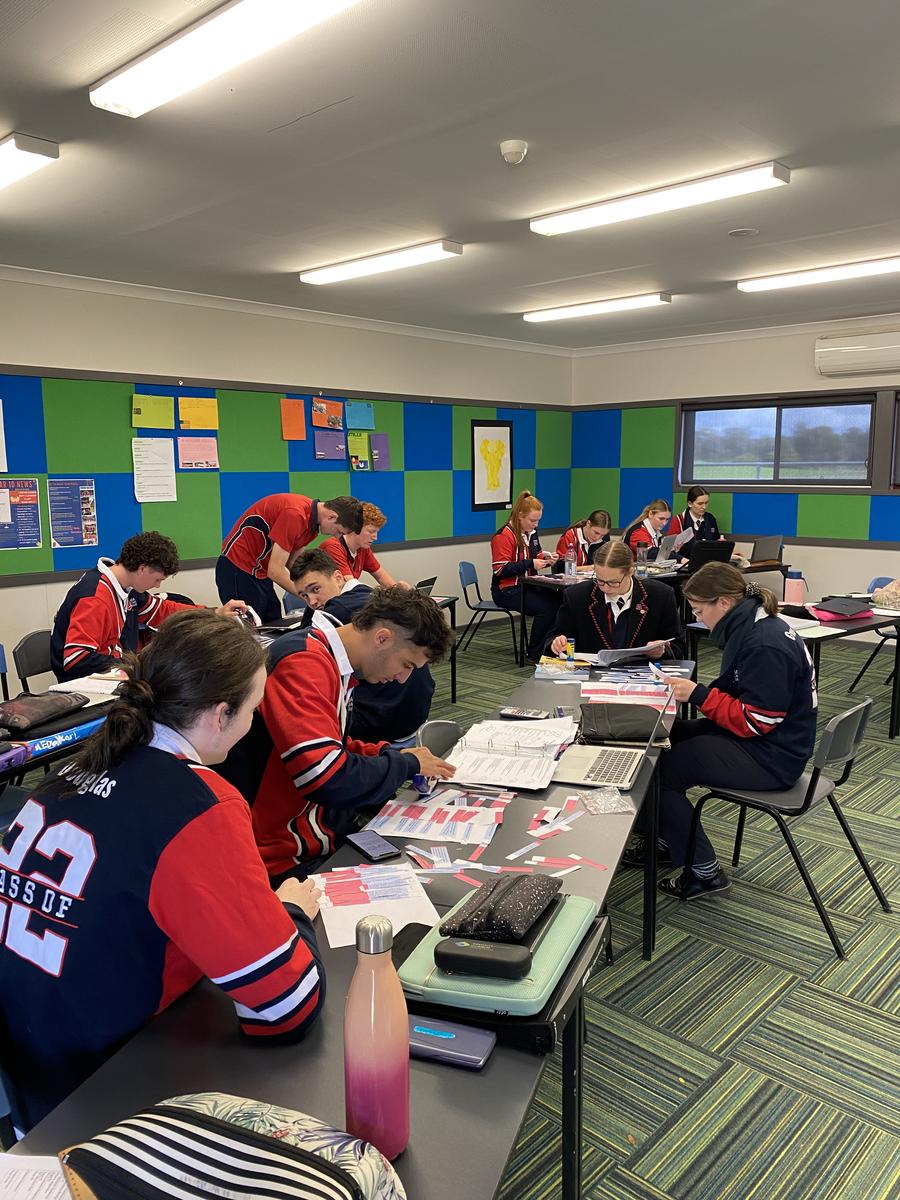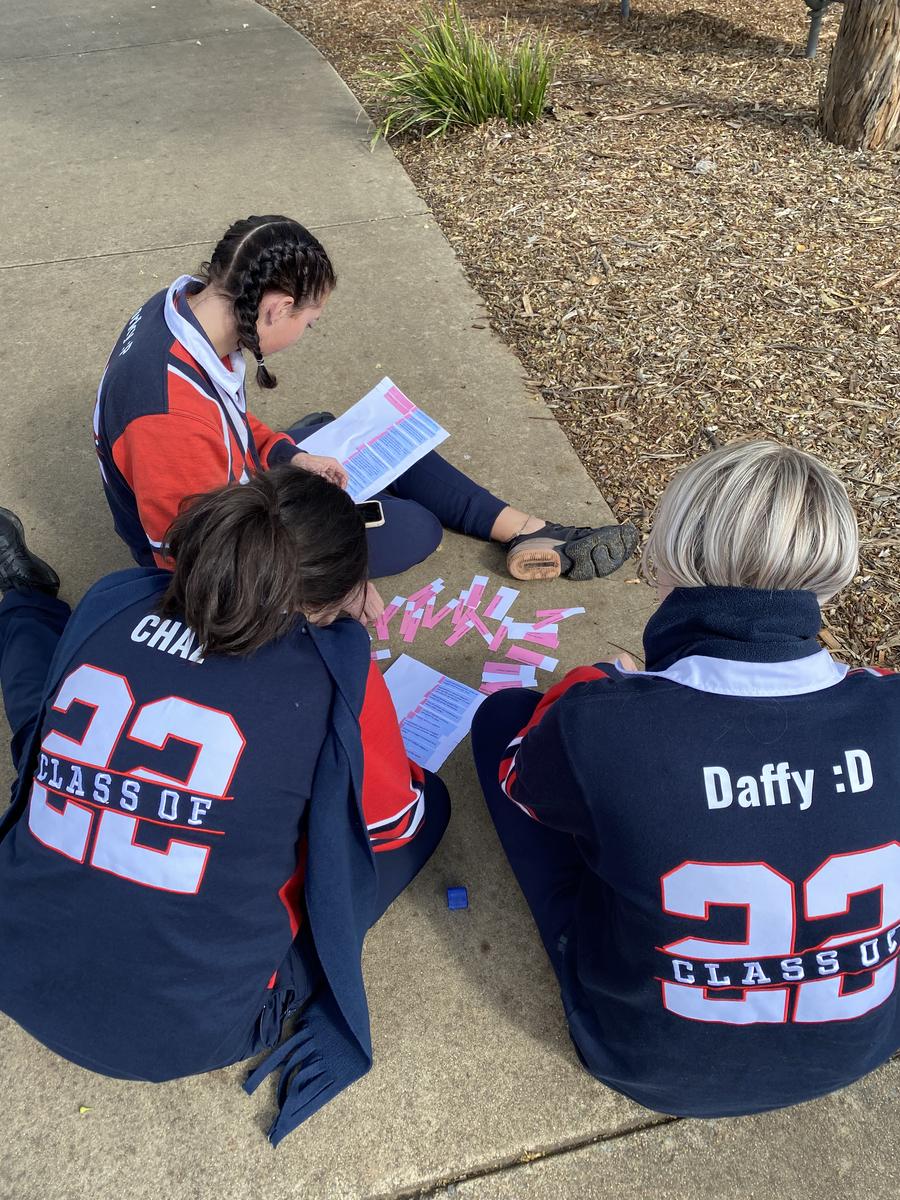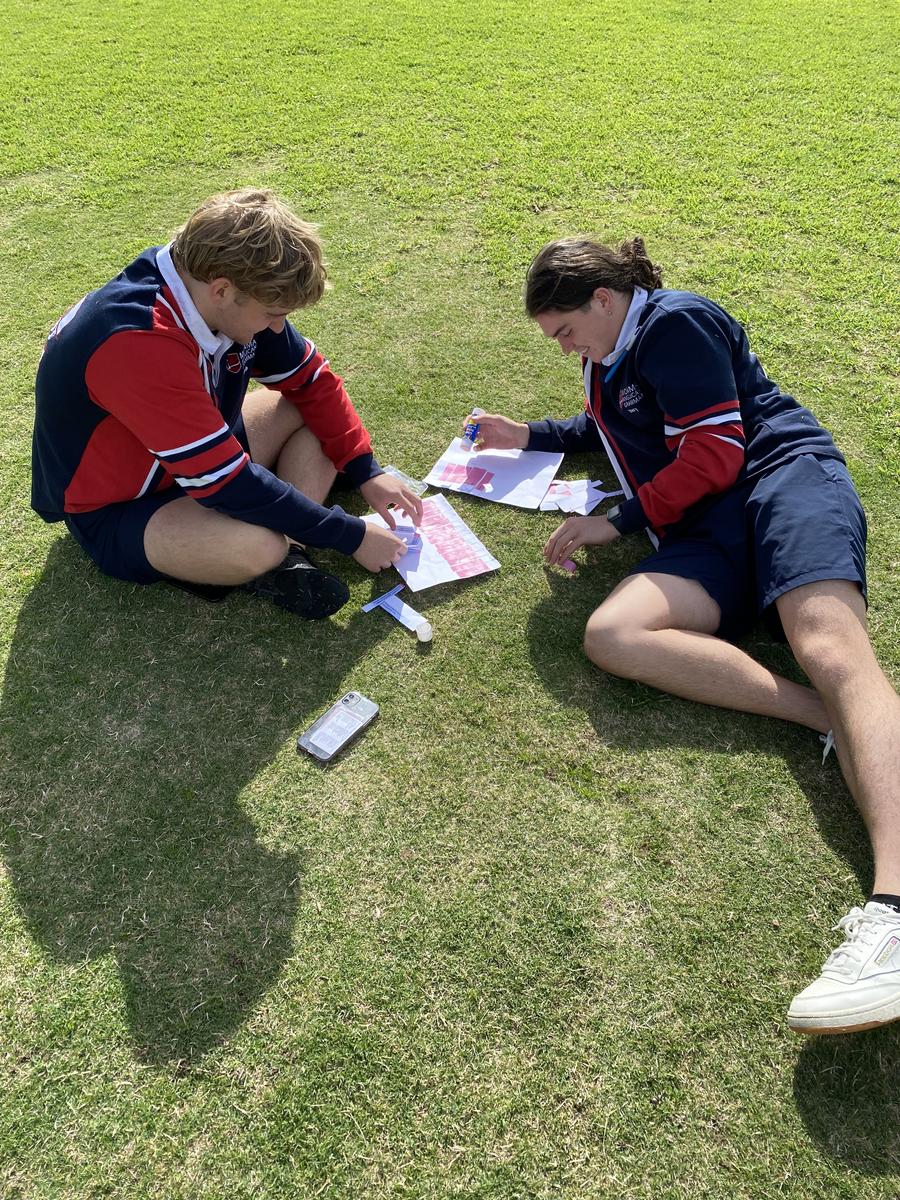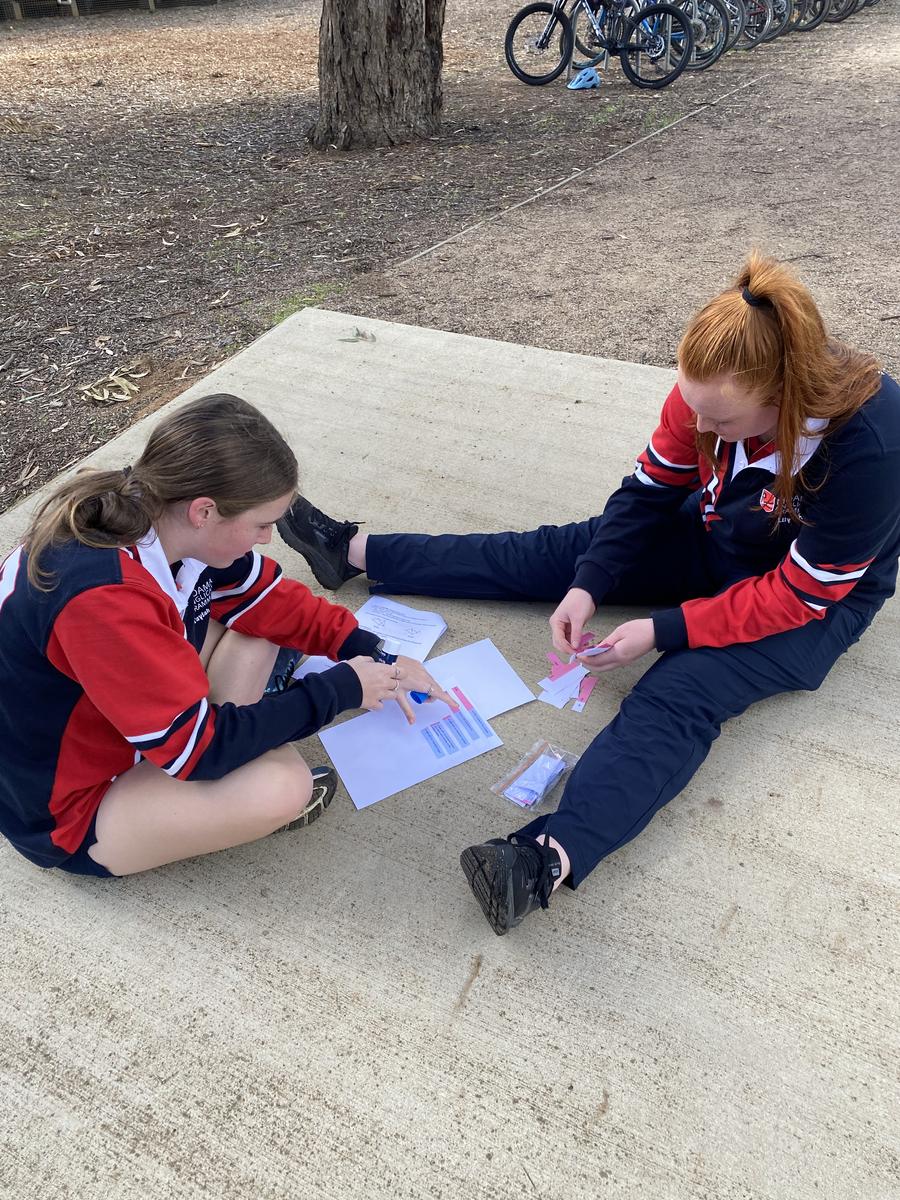From the Deputy Principal
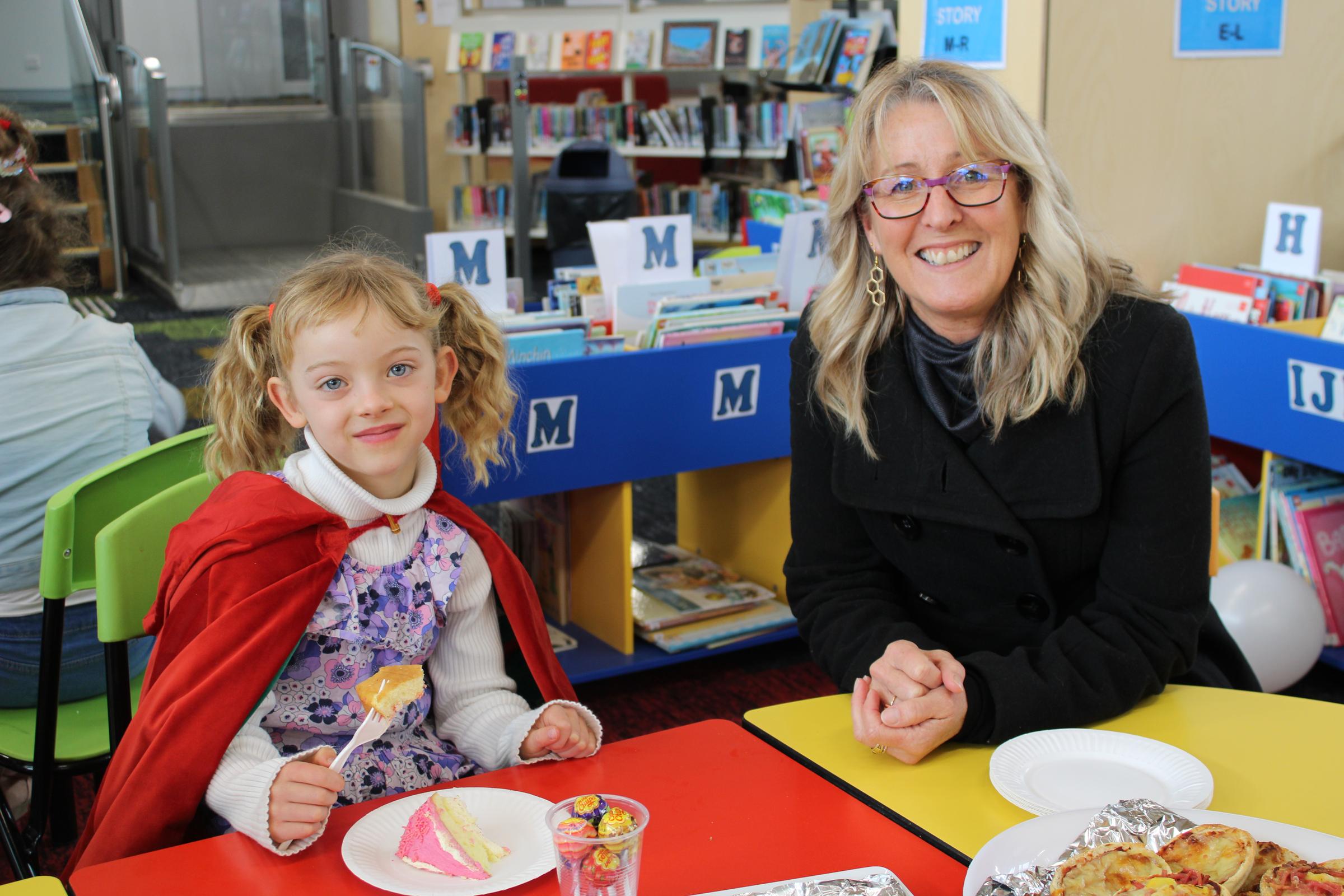
Being Welcomed and Cyber Safety
This morning I had the honour of working with a Year 7 HSIE class. As a Deputy Principal, I don’t get to spend as much time in the classroom and I certainly miss it at times. The wonderful thing about our students is how welcoming they are of new teachers in their classrooms, and the Year 7 HSIE class I took this morning was no exception. We have welcomed a number of new teachers, most recently Year 5 teacher, Mrs Blythe Jennings, Secondary teachers Ms Kate Griffin (English and HSIE), Ms Marion Martin (Mathematics) and Mental Health Practitioner, Mrs Liz Smith. All of them have commented how welcome our students have made them feel.
Next term I am off on Long Service Leave which will be the first time that I have had a complete break away from Moama Anglican Grammar since commencing here in 2005. Although I am very much looking forward to some adventure, rest and relaxation, I will miss the students (an extra shout out to the wonderful group of Year 12 Standard Mathematics students I have thoroughly enjoyed teaching), families and staff that have become such a big part of my life over the last seventeen years. I am consoled by the fact that Term 3 will be well and truly covered without me and look forward to returning in Term 4.
In November last year we ran a number of Cyber Safety presentations for our students, staff, family and the wider community. As part of the presentation from ySafe, Moama Anglican Grammar parents and guardians (and those from the wider community who attended the presentation) received one year’s access to the ySafe Parent Hub. See link below.
Cyber Safety is an ongoing priority for schools, parents and guardians as we navigate the ever-evolving world of technology with our young people. I thought it would be a good reminder to include the information I shared with families in the November 2021 Newsletter again to remind everyone of the valuable resources we have access to until November 2022 via the online Safety Hub.
Below are a few key points that were presented on last year that are still relevant today:
- Role modelling – parents and guardians are often the main role models in a child’s life. They watch what you do even when you don’t realise it. Therefore, it is so important that when it comes to technology, we role model what we want our children to do – how often are we scrolling through our phone while our children are having a conversation with us?
- Find out which platforms your children are using and become familiar with what they do
- Instagram, Tik Tok and SnapChat are the most popular with young people but there are new APPs being developed all the time. One of the more recent ones is Only Fans and is actually for over 18s but a number of younger children are using it
- Unfortunately, 1 in 5 children are bullied online and Instagram, Tik Tok and Snapchat are the most frequently used platforms that bullies use. Sometimes young people can unintentionally bully someone – they genuinely think “everyone knows it’s a joke” and believe the person at the other end of the “joke” also think it is funny, because they do not say otherwise. However, the makers of some of these platforms have introduced a pop up on their APPs so that when a derogatory type of phrase or sentence is entered, the person will be asked if they really want to send it. This gives at least a moment of reflection time so that offending messages can be deleted before being sent.
- It is very easy to make “fake accounts” on Instagram. Young people sometimes create a fake account under the name of someone they know “as a joke”
- Many platforms, unfortunately, “glamourise” alcohol and drugs
- Pick appropriate games for children who like gaming technology. The average age of gamers online is 34 years old. Make sure parameters are set within home technology so that children know who they are gaming with
- Recent research has found that the more children are involved with sporting activities the less screen time they choose
- School age children do not have a developed pre-frontal cortex in their brain yet so can find it difficult to self-regulate. E.g. TikTok is the platform that is the most hardest to stop looking at for teens and can be a significant culprit in “taking up time”
- Algorithms are set in these platforms so that themes of posts young people look at most come up on their feed more often.
- Children will often bring up concerns about social media to parents and guardians at the most inconvenient times. However, if young people bring up a topic of concern for them, we must be ready to listen and show that we are listening. These moments, to have supportive discussions, are significantly important
- Parents and guardians can create opportunities to problem solve with their young people. E.g. “I heard from another parent at school that some of the Year 8’s are …. how do you think they would be feeling…..what do you think should be done about it?”
- Role model appropriate times to use technology. E.g. Parents and guardians should never text or call their children during school time. Instead, they can contact the school directly so that we can support students effectively. Conversely, parents and guardians should encourage their children to seek out a trusted teacher if they have concerns at school rather than texting or calling home during the school day (this was not actually discussed at the presentation, but I thought it was a good example to mention regarding use of role modelling phone technology)
- Young people often casually share their passwords, to their phone or APPs, with their friends and need regularly conversations to be had about technology security and the pitfalls and possible consequences of doing this
- Family Zone is an APP that parents and guardians can buy to help with their children’s use, access and regulation of technology. ySafe recommend that if you use Family Zone to keep it on your child’s phone until they are 15 years old.
- Most importantly – ABC!
- Access – what content is your child(ren) looking at. Be familiar with how to set up parameters on your child’s technology so they can only access appropriate content. Put parameters and boundaries around when they can and cannot access technology in the home
- Boundaries – clearly set by parents and guardians including firm “off times” in the evenings. Your child may tell you that you are “the only parent/guardian in the whole world to make me do this!”. This is not true. There will be many other parents and guardians setting boundaries for their children but your child(ren) will not tell you about these
- Communicate openly with your children about the benefits and pitfalls of technology. Problem solve with your children social media dilemmas – ask key questions such as “how would you feel if you got that type of message/post?” ect.
Parenting our young people in this technological world is not easy. However, there are also many benefits of modern technology too. Our children have been able to continue their schooling at home during a pandemic and Microsoft Teams technology and social media (for the older students) have meant young people can communicate with each other during isolating Lockdowns. The increased learning about all the wonderful things happening around the world has been made possible with technology. Advancement in communication technology has meant virtual “live” contact with loved ones on the other side of the world possible. Cures and prevention of some of the world’s worst illnesses have been made possible and 3D printing of artificial limbs have helped people to move and do things in ways never thought possible. The conversations about the benefits of technology and social media are important to be having with our young people too.
There are many tips and strategies that parents and guardians can implement to support their young people be cyber safe at home. ySafe have lots of excellent information in their Parent Hub that are still available for families to access until November 2022. To access the Parent Hub just click on this link: https://moamagrammar.cybersafetyhub.com.au
Schools implement a number of “safety/fire walls” in the online space when students are here at school using the schools network. It is certainly recommended that similar is set up in the home. Our propriety is always the safety and wellbeing of our students while at school and this includes their cyber safety. Working with families in a partnership is also important in giving young people consistent messages about how to be safe in a technological world.
Wishing everyone a safe and enjoyable holiday break and I will look forward to being back in Term 4!
Mrs Kathleen Kemp
Deputy Principal

